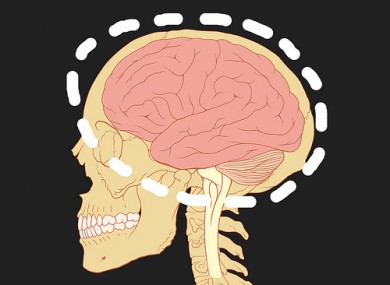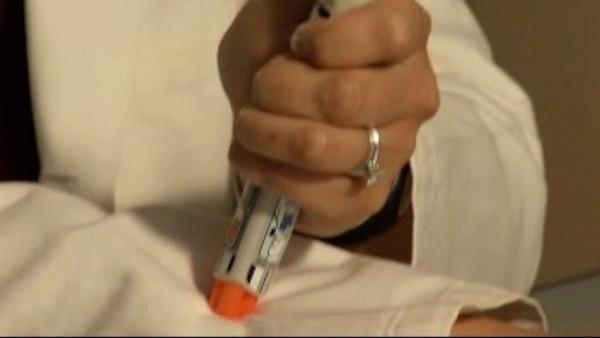Its worse in Texas!!!
Be vocal and advocate for your child to see a pediatric specialist! One way to reduce health care costs is to restrict access.
. If you have an access issue, speak to your primary care, your HR department at your employer, your insurance representative and/or a case manager! JR
From HealthNewsDigest.com
Pediatric Shortages, Long Wait Times Reinforce Need for Improved Access to Health Care for Children
By
Jul 23, 2012 - 10:43:10 AM
(HealthNewsDigest.com) - Alexandria, VA – As the fight around the constitutionality of the Affordable Care Act settles, new data indicate that the battle to ensure timely access to health care for America’s child patients is far from over. Today, the Children’s Hospital Association unveils results of a national survey that shows severe physician shortages and long wait times are a harsh reality for many kids seeking health care in the United States. The Association releases these findings as part of its Family Advocacy Day, July 23-25, an annual, national event that enables children’s hospital patients and their families to share their health care stories and make their voices heard on Capitol Hill.
“Although significant progress has been made to support children’s health care in recent years, children still face barriers when accessing pediatric care,” says Mark Wietecha, president and CEO of the Children’s Hospital Association. “Children deserve better. More needs to be done to ensure they’re getting the care they need, when they need it and in the right care setting.”
The survey analysis of nearly 70 children’s hospitals across the country reveals ongoing vacancies of 12 months or longer among key pediatric specialties – such as neurology (39 percent of hospitals surveyed), general surgery (30 percent) and developmental-behavioral medicine (28 percent) – that are impacting hospitals’ ability to provide timely medical care to kids. These findings are reinforced by American Board of Pediatrics Workforce Data 2011-2012, which show restricted access to certified specialists in several areas of the country.[i]
In fact, 3 out of 4 hospitals say the shortages have caused delayed appointments. By the time a child is able to get in for an appointment, he or she may be waiting up to seven times longer when compared to the ideal two-week appointment wait time that hospitals strive for. In the most affected specialties, children can wait nearly 15-weeks for appointments in developmental-behavioral medicine and nine weeks in neurology. Overall, children’s hospitals say the shortages most affecting their ability to deliver care lie in neurology (15 percent of hospitals surveyed), developmental-behavioral medicine (8 percent), gastroenterology (7 percent), pediatric surgery (7 percent), and neurosurgery (5 percent).
Experts agree that without federal funding for critical child health care programs, children’s access to care could be jeopardized even further. The Children’s Hospitals Graduate Medical Education (CHGME), a national program solely devoted to helping children’s hospitals train pediatricians and pediatric specialists, supports the training and development of half of all pediatricians and pediatric specialists practicing in the U.S. Unfortunately, CHGME funding has been rolled back by more than $50 million since FY 2010 and is far below the support needed to close the gap between demand for care and the supply of these specialized caregivers. While CHGME has been successful and has helped increase the number of pediatric providers trained annually, more is still needed. Without sufficient funding for CHGME, as illustrated through the new data, a national shortage of pediatric specialists will persist.
CHGME is not the only national child-focused health care program at risk. Federal budget proposals would slash funding to Medicaid, the federal-state program that provides health coverage to 1 in 3 children, further restricting children’s access to health care. Today, there are numerous proposals to cut Medicaid by billions over the next 10 years. These proposals are on top of the billions in cuts that states have already implemented over the past few years as a means to balance their budgets. (A $1 cut at the state level produces a federal savings of $0.57.)
No one understands the impact of the pediatric specialty shortages quite like the families who have experienced it firsthand. Joining the Children’s Hospital Association in Washington this week to discuss the impact of pediatric shortages is the Johnston family of Minneapolis, MN. Mike Johnston, age 14, suffered from debilitating headaches for over a year until he was diagnosed with a cancerous brain tumor in April 2011. Long waits were an unfortunate reality for Johnston, who attempted to get appointments with psychologists and neurologists before the discovery of the tumor. He was admitted to the emergency room before either of the appointments arrived.
“Had we visited the neurology department earlier, I’m confident they would have seen the mass forming,” explains his dad John Johnston. “And while the treatment likely would have been the same, Mike would have suffered far less. He was lucky, and thanks to specialized care, he’s now cancer free. Sadly, for millions of other children waiting for care, the outcome may be very different.”
The Johnston family is joined in Washington this week by nearly 30 other child patients, from 19 states and the District of Columbia, to bring to life the importance of timely, quality pediatric care for kids, and encourage legislators to take action to protect and improve care for children.
“As the data confirm, and the patient stories illustrate, many children wait far too long to get needed services to diagnose, treat and manage all kinds of diseases,” notes Wietecha. “When children don’t get timely care, they miss school; they can fall behind; their parents miss work, creating more family stress. A domino effect can occur when children don’t have timely access to specialized pediatric care.”
While shortages in neurology and behavioral-developmental care rise to the top of the Association’s list of shortages, the data show the overall impact of shortages is widespread, with children waiting for care in other key areas, including genetics (11 weeks), rheumatology (8 weeks), dermatology (8 weeks), child and adolescent psychiatry (7.5 weeks), and endocrinology (7 weeks).
As a result of difficulties recruiting pediatric specialists, children’s hospitals also report increased recruitment costs (67 percent of hospitals surveyed); lost referrals - where children are referred to other providers who are adult clinicians (64 percent); decreased staff morale (56 percent); increased salaries (55 percent); delayed and/or lost surgeries and reduction in level of service (52 percent).
# # #
About the Children’s Hospitals Pediatric Specialist Workforce Survey
Fielded by the Children’s Hospital Association during the month of May 2012, 69 member hospitals of the Association completed the survey.
Methodology: Surveys were sent to all medical directors (or their designees) in hospitals that are members of the Children’s Hospital Association. The survey, consisting of seven questions, was sent in an Adobe PDF format via email, and respondents were asked to email or fax their completed survey back to the Association. In total, 69 hospitals responded (approximately a 30 percent response rate) including many of the largest children’s teaching hospitals in the nation. Analysis was completed using SPSS Statistics 20.0.
Limitations: Responses came from a variety of hospitals: acute care to specialty care, large hospitals to small hospitals. Not every hospital provided a wait time for every specialty, due to the fact that some hospitals do not offer all services or do not collect data on all of services.
About the Children’s Hospital Association
The Children’s Hospital Association advances child health through innovation in the quality, cost and delivery of care. Representing more than 220 children’s hospitals, the Association is the voice of children’s hospitals nationally. The Association advances public policy enabling hospitals to better serve children, and is the premier resource for pediatric data and analytics driving improved clinical and operational performance of member hospitals. Formed in 2011, the Association brings together the strengths and talents of three organizations: Child Health Corporation of America (CHCA), National Association of Children’s Hospitals and Related Institutions (NACHRI) and National Association of Children’s Hospitals (N.A.C.H.).
For more information on Family Advocacy Day, visit www.childrenshospitals.net, or follow the families on Facebook at http://www.facebook.com/childrenshospitals or Twitter, @speaknowforkids, #FAD12.
[i] American Board of Pediatrics, 2011: https://www.abp.org/abpwebsite/stats/wrkfrc/workforcebook.pdf
 Discovery of a new classification of genes have the potential to change medication that can prevent seizures.
Discovery of a new classification of genes have the potential to change medication that can prevent seizures.








